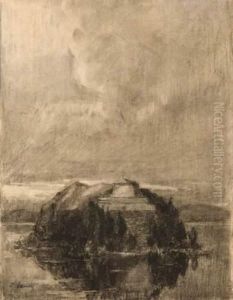Leon Bauche Paintings
Leon Bauche, whose life was tragically cut short by the outbreak of World War I, was a French artist known for his academic painting style. Born in 1887, Bauche showed an early aptitude for the arts and pursued his passion with vigor and dedication. His work was primarily influenced by the artistic movements of the 19th century, which included Romanticism, Realism, and the early stirrings of Impressionism.
Bauche's career unfolded during a time of great change in the art world. The late 19th and early 20th centuries were a period of transition, with the old academic styles being challenged by avant-garde movements like Impressionism, Post-Impressionism, and eventually Cubism and Fauvism. Despite these shifts, Bauche remained committed to the academic style, which emphasized classical drawing, clear composition, and a polished finish.
His oeuvre was characterized by a masterful use of light and shadow, a strong sense of realism, and often, a certain emotional depth. Though much of his work has been overshadowed by the more prominent artists of his time, Bauche's dedication to his craft earned him a respectable place among the academicians of his day. He exhibited his work at various salons and galleries, receiving recognition from critics and patrons alike.
Leon Bauche's promising career was abruptly ended by the Great War. He was conscripted into the French Army, as were many men of his generation, and he perished in 1914, one of the countless early casualties of the conflict. His death meant not only the loss of a talented artist but also the silencing of a unique voice that could have contributed significantly to the evolution of French art. Today, Bauche's works are a testament to the skill and potential of an artist whose life was ended too soon.
